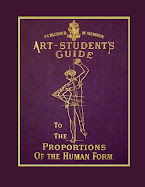 Link to the image. Another image.
Link to the image. Another image. Link to the image..
Link to the image..These are images from Joseph Meyer's encyclopedia Meyers Konversations-Lexikon. The encyclopedia is available in facsimile form and search-able form at Zeno.org.
These illustrations show the forms of man and woman using a proportional system of the time which illustrated proportions through a series of points connecting the main features of the body.
From Wikipedia:
Joseph Meyer (May 9, 1796, Gotha, Germany - June 27, 1856, Hildburghausen, Germany) was a German industrialist and publisher.
Meyer was educated as merchant in Frankfurt am Main. He went to London in 1816, but returned to Germany in 1820 after business adventures and stock speculations fell through. Here he invested in enterprises like textile-trade (1820-24), mining industry and railways in the thirties and forties of the 19th century, but with limited results.
Meyer operated very successfully as a publisher, employing a system of serial subscription to publications, which was new at that time. To this end he founded the company "Bibliographisches Institut" in Gotha in 1826, which issued several editions of the Bible, works of classical literature ("Miniatur-Bibliothek der deutschen Classiker", "Groschen-Bibliothek"), atlases, the world in pictures on steel engravings ("Meyers Universum", 1833-61, 17 volumes in 12 languages with 80,000 subscribers all over Europe), and an encyclopaedia, ("das Grosse Conversations-Lexikon für die gebildeten Stände"; see Meyers Konversations-Lexikon, 1839-55, 52 volumes).








Another image shows the human form in art.
 Link to the image.
Link to the image.This one shows the anatomy of the human skeleton:

This one shows the muscles of the human body.

Link to the image.
Link to another post with anatomical images from the encyclopedia.
From Amazon.com

Die Gestalt des Menschen in der Kunst und im Spiegel der Wissenschaft (German Edition)

Studien zur Gestalt des Menschen.
















No comments:
Post a Comment